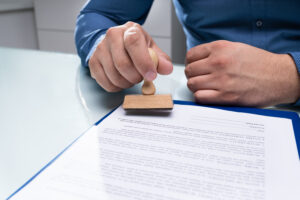
The thrill of the open road is hard to top and can be a great escape from reality. Riders often marvel at their newfound independence and ability to soar easily across the landscape. Unfortunately, a motorcycle is not a cheap purchase, and often the only way to get the bike you want is to buy a used one. Before you jump into buying a used model, there are some things you should know so you can make an informed decision. Here are five tips for someone looking to purchase a pre-owned motorcycle.
1. Check Your Budget
Make sure that your budget can handle a used motorcycle before you start shopping. While they are generally cheaper than a brand-new model, buying a pre-owned motorcycle will still cost money. Look at the bike’s price, accessories, and consider insurance and registration fees for your state. This can add up quickly depending on the age of the bike. Be realistic about how much you can afford to spend on your new purchase, and make sure you can pay for it within a reasonable period. Shop smart and find the right bike that fits your budget and lifestyle. Some used motorcycles for sale have great deals attached to them such as no down payments.
2. Look for Damage
Inspect the bike thoroughly. Are there scratches on the fuel tank? Does it look dented, or is it scratched? Is there any visible rust? If the bike has been in a major accident and has been repainted, look at the color of the paint. Is it glossy or matte, and does it look even or faded along parts of the bike? You can also check around to see if any repairs were made to certain parts, such as a new part being welded onto the frame. Check for dings on the side panels of the bike. Cosmetic damage can be fixed. The most important thing is to check the integrity of the motorcycle. If a bike has been in an accident or neglected, other problems could hide underneath these problems.
3. Take a Test Drive
When you take the bike for a test drive, take it on the open road. A short ride down the block is not enough time to see if there are any problems. You can bring your helmet and check how it feels while moving and at different speeds. Make sure you check the bike out at speeds up to 80 miles per hour. Do this on a deserted road in an area where traffic is low, and there are no pedestrians or other cars around you. Take a long ride on the bike so you can experience how it handles at high speeds and low-speed turns. Make sure that the engine is running correctly. Listen carefully to the noises it makes while you change gears, listen to the engine, and feel the vibrations when you kick it over.
4. Check the Tires
Properly maintained and inspected tires should last a long time. However, the tires can wear down faster than normal when the motorcycle is put through its paces. Check if the tires are still in good shape. Is there any visible wear on them? In some cases, it may be necessary for one or more of the tires to be replaced because of weakness or physical damage. Check for cracks in the tires. Look at how old the tread is and if it looks even. Check to see if there is any uneven wear from one side of a tire to another. This could indicate a bent rim or problems with the rims that must be addressed.
5. Ask for Paperwork
The law states that a motorcycle must be registered with the DMV. Before purchasing a pre-owned motorcycle, ask for the title and examine it thoroughly. This document contains the vehicle identification number, the owner’s name, and the date and location where it was manufactured. The title includes the purchase and sales tax, all warranties, and service records. Check to make sure that all the documents have been signed and are still valid. Be cautious about purchasing a used motorcycle with nothing in writing, such as a refund guarantee or any other type of agreement.
Conclusion
Buying a pre-owned motorcycle can be an exciting adventure, but you need to know the basics of what you are getting. You must also know much about cars and motorcycles to spot significant problems. Inspect every part of your potential purchase carefully. Look at the efficiency of the brakes, the tires, and other parts. Pay attention to how comfortable it is and how well it handles curves. If you have any doubts about what you are buying, ask the seller some questions and do some investigating on your own.

